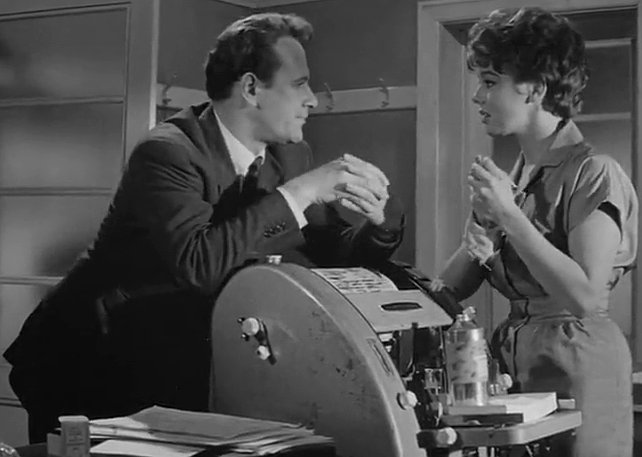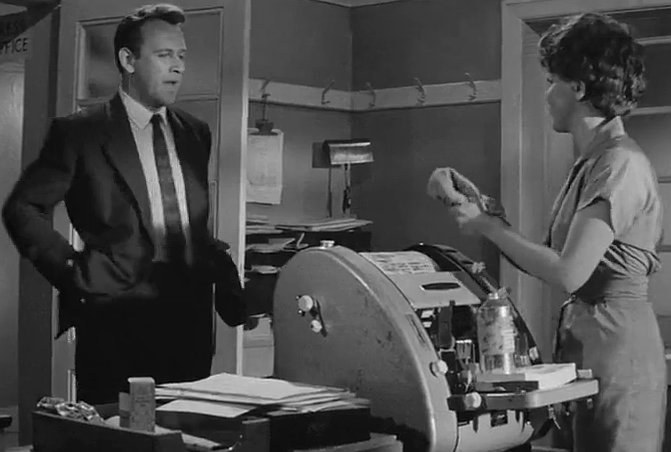(1) SEE SAMATAR’S EPIC LECTURE. Sofia Samatar will deliver the 2024 Richard W. Gunn Memorial Lecture on Monday, March 18, at 4:00 p.m Central. The lecture is virtual and you can register here. She will be speaking on the relationship between epic poetry and fantasy:
What is the relationship between ancient epic poetry and the contemporary genre known as epic fantasy? This talk offers five answers to that question, from the perspective of a speculative fiction writer. Sofia Samatar is the author of six books, including the memoir The White Mosque, a PEN/Jean Stein Award finalist. Her works range from the award-winning epic fantasy A Stranger in Olondria to Tone, a collaborative study of literary tone with Kate Zambreno.

(2) THE FIRST GREEN HILLS. Bobby Derie filled in a previously unsuspected gaping hole in my knowledge of sff history with “Quest for the Green Hills of Earth (1995) by Ned Brooks” at Deep Cuts in a Lovecraftian Vein. Originally I was just checking to see if he was talking about the Ned Brooks I knew – he was. Then – bang! – I discovered that C.L. Moore and Henry Kuttner are at the root of a famous verse tradition.
…Who wrote this bit [in “Quest of the Starstone”]? Moore was the poet of the pair, but Kuttner was no slouch, and the title itself is a callback to two previous tales. In “Shambleau” Moore wrote: “[…] he hummed The Green Hills of Earth to himself in a surprisingly good baritone”; and in “The Cold Gray God” (1935):
“No one sang Starless Night any more, and it was the Earth-born Rose Robertson’s voice which rang through the solar system in lilting praise of The Green Hills of Earth.”
That could be the kind of detail that a good pasticheur like Kuttner would pick up and expand upon. Yet it wouldn’t be surprising if they both had a hand in the final version of this scene….
…However, Sam Moskowitz claims:
“When Robert Heinlein read the story, he never forgot the phrase which became the title of one of his most famous short stories and of a collection, The Green Hills of Earth.” — Sam Moskowitz, Seekers of Tomorrow (1967), 312
“The Green Hills of Earth” ran in The Saturday Evening Post for 8 Feb 1947, and provided the title for Heinlein’s 1951 collection of science fiction. Heinlein did not reiterate Moore & Kuttner’s verses, but came up with his own—and attributed it to an author, the blind poet Rhysling….
Ned Brooks later produced a chapbook based on these works:
…This is where Quest of the Green Hills of Earth (1995) comes in. Edited by Ned Brooks and illustrated by Alan Hunter, this is the kind of standalone chapbook that is a hallmark of science fiction and fantasy fandom. It reprints “Quest of the Starstone” in its entirety, Heinlein’s verses from “The Green Hills of Earth,” and three fan-made versions—one by Chuck Rein, George Heap, “and other fans of the 1960s”; one by Don Markstein (“late 60s”), and one by Steve Sneyd (Oct 1992)….
(3) SPIRITED GIVING 2024. Spirited Giving, a horror-themed fundraiser serving as the official kickoff to StokerCon 2024, takes place May 29, 2024 beginning at 3:00 p.m. in the San Diego Central Library. Full details at the link.
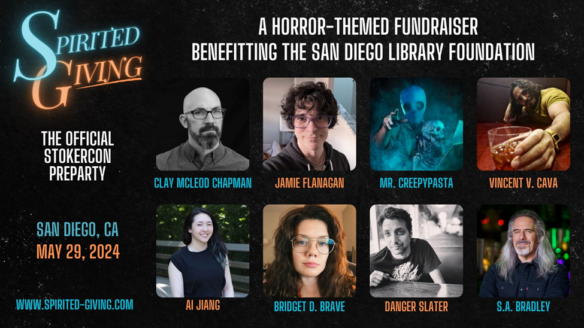
It’s a night of author readings, live performances, meet and greets, and book signings, all while raising funds for the San Diego Library Foundation, particularly the Books Unbanned Initiative.
The event will feature readings from: Clay McLeod Chapman, Jamie Flanagan, Ai Jiang, Vincent V. Cava, Danger Slater, and Bridget D. Brave. And a special one-hour live performance by YouTube Horror Narrator Mr. Creepypasta.
To attend the event, get Spirited Giving Tickets at Eventbrite.
(4) IF NOT NEWS TO YOU, IT WILL BE NEWS TO SOMEONE. At Literary Hub Debbie Berne makes her case — “Not Just Covers, But Every Page: Why Writers Should Talk About Book Design Early On”.
… Interior design is both micro and macro. It involves technical prowess and creativity. There is line-by-line typesetting and there is translation of vibe.
Take, for instance, chapter openers. Most books are divided into chapters and an author has decided if they each have chapter titles or just numbers, or both, or neither, or additional info like a subtitle or time stamp or narrator name or geographic locator or setting-up-an-idea pull quote.
The designer, then, must figure out how to make those pieces of text—many or few—look nice and clear on the page and put forward an aesthetic, bringing visual voice to the writing voice. Which font? How big? How bold? Italic? Centered or no? In a single line, neatly stacked, cascading? Each decision is literal and expressive….
(5) HOW MUCH WAS C-3PO’S HEAD WORTH? Read the answer reported in Friday’s Birmingham (UK) Mail.

(6) SPRINGTIME FOR WONKA. Everyone is going to make money off this disaster except the people who perpetrated it. (Would you have it any other way?) “Viral Willy Wonka Glasgow event to be turned into musical” at BBC.
A new musical satire based on a Glasgow Willy Wonka experience that went viral is in the works.
The show’s lead producer, Richard Kraft, has assembled a team of writers and producers for the project titled Willy Fest: A Musical Parody.
The event in February gained notoriety after angry families, who paid up to £35 to attend, demanded their money back.
Kraft says he hopes people watching the show “won’t be left in tears.”
The creative team working on the musical includes Emmy-nominated actor and comedian Riki Lindhome who tweeted, “I’m so excited,” along with screenshots of an article.
Others attached to the project include Broadway songwriters Alan Zachary and Michael Weiner.
Kraft is known for producing and directing a Willy Wonka and the Chocolate Factory concert at the famed Hollywood Bowl.
He told the BBC it was his idea to turn the Glasgow event into a musical and that the writing team was “assembled in less time than it takes for someone to sing the first verse of ‘Oompa Loompa Doompa-Dee-Do’.”
He hopes to launch the musical later this year….
…Asked why the Glasgow event might be ripe for the musical theatre treatment, Kraft said: “It is about desperate dreamers who actually have fragments of a great idea, just executed beyond their budget and abilities.”
He said he loved shows “about big-hearted flim-flam artists in musicals like The Music Man, The Greatest Showman, and The Producers. At the core they are romantics who get in over their heads.”…
(7) THREE-BODY, BUT NOT JUST ONE PROBLEM. “’3 Body Problem:’ How Netflix’s new sci-fi saga employs the legendary Wow! signal” – Space.com is sure you’ll want to know.
The Wow! signal is one of the great astronomy puzzles of the past 50 years, but it’s not so mysterious in the sci-fi universe of “3 Body Problem.”
Netflix’s new eight-episode alien invasion saga “3 Body Problem” uses the famous SETI (search for extraterrestrial intelligence) signal as a prominent plot device in its wild centuries-spanning narrative.
The Wow! signal was an intense narrowband radio signal detected on the night of Aug. 15, 1977 by Ohio State University’s Big Ear Radio Observatory and the North American Astrophysical Observatory (NAAPO) during a standard SETI search. No personnel were on duty at the time, yet the strong 72-second-long signal was recorded by a computer printer….
Beware spoiler:
… “3 Body Problem,” which drops on March 21, puts its own spin on the signal. In the series, Wow! is a real message from intelligent aliens beyond Earth. A Chinese astrophysicist responds to the translated signal by inviting the aliens to visit Earth — to humanity’s detriment, as we later learn….
(8) SIGNING TIME. John King Tarpinian has the Glendale Civic Auditorium all prepared to welcome tomorrow’s influx of dealers to the 2024 LA Vintage Paperback Collectors Show & Sale.

(9) JON STOPA (1935-2024). Longtime Chicagoland fan Jon Stopa died March 4 at the age of 88. See the family obituary in the Kenosha News at the link. (The family obituary spells his first name “John”. In the sff field he was known as “Jon” except for the few instances when he used “John” in the credits for his book cover art for Advent:Publishers).
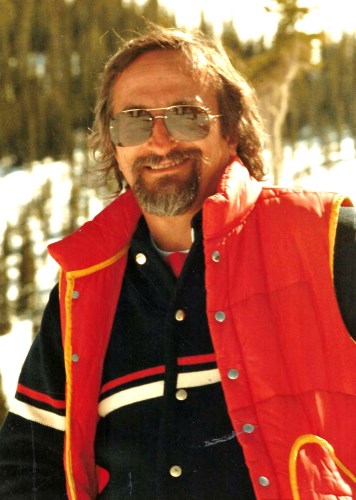
Fancyclopedia 3’s article about Jon records that he made his first sf short story sale to Astounding at age 22, “The First Inch” published in 1957, followed by two more appearances in Campbell’s magazine in 1958. Jon’s fourth and last fiction credit was in 1973 with “Kiddy-Lib” in Eros in Orbit.
He co-founded Advent:Publishers in 1955 with Earl Kemp, Robert Briney, Sidney Coleman, James O’Meara, George Price, and Ed Wood. The company produced nonfiction books about the sf field, the first of which was Damon Knight’s essay collection In Search of Wonder (1956).
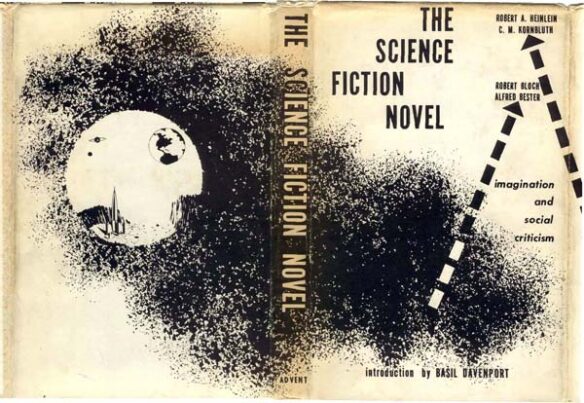
Stopa met Joni Cornell at the 1960 Worldcon (Pittcon). They married in 1962 and lived at Wilmot Mountain, Stopa’s family ski resort in Wilmot, WI, where they began hosting Wilcon, a three-day long invitation-only relaxacon.
Jon appears as a bartender in the video Faans (1983) (around the 18:50 mark) in a scene shot at the lodge at Wilmot Mountain.
Throughout the 1960s, the Stopas entered and won many convention masquerades. In the early 1970s, the couple helped found the conrunning group ISFiC.
The Stopas were Fan GoHs at Chicon V, the 1991 Worldcon.
Jon’s survivors include his grandson, Keanen (Kim) Burns; sister, Diane Reese; great-granddaughter, Kinsley Burns; and nieces: Tiffany and Amanda Stopa. Along with his parents and wife; John was preceded in death by his daughter, Deb Burns; and brothers: Walter Jr. and Conrad (Karen) Stopa.
(10) TODAY’S BIRTHDAY.
[Written by Cat Eldridge.]
Born March 16, 1920 — Leo McKern. (Died 2002.) Pop culture is wonderful, isn’t it? And Leo McKern was definitely part of it.
The Prisoner where he was Number Two in three of the seventeen episodes is definitely his best remembered SF role. He played that role more than any of the other seventeen credited actors. That is if you consider The Prisoner to even be SF and not merely a spy series gone very weird. Just tossing that idea out here.
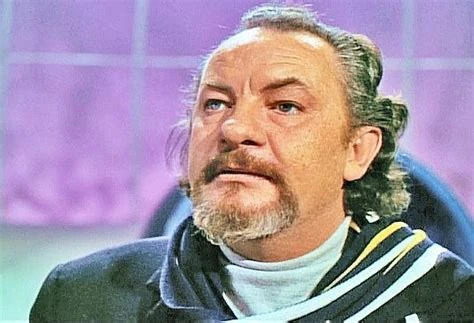
Next up is The Adventures of Robin Hood where he was Sir Roger DeLisle, usurper of the Locksley manor and lands, and Herbert of Doncaster, a corrupt moneylender. It was an early Fifties series and his of earliest acting roles.
Sliding on later in his career is one of my favorite roles by him, Horace Rumpole, a London barrister on Rumpole of the Bailey. He was a great character to watch, the cases were interesting and the supporting cast was well thought out.
Slipping on over to his radio work, he was the voice of Captain Haddock in the 1992 and 1993 BBC Radio Hergé’s The Adventures of Tintin.
He was “Mac” MacGill in X the Unknown, a Fifties horror SF film from Hanmer Productions; and he’s got a lead role as Bill McGuire in The Day the Earth Caught Fire, an end of the world Sixties film.
The final role I want to mention is in The Adventure of Sherlock Holmes’ Smarter Brother where he gets to be Professor Moriarty. I’m almost certain that I’ve seen it.
(11) COMICS SECTION.
- Wizard of Id has a genre golf joke.
And we’re overdue to catch up with Tom Gauld!
(12) STAND AND DELIVER. [Item by Steven French.] Sally Wainwright is a national treasure over here in the U.K. so her writing a new fantasy show set in the 18th century (featuring Louisa Harland formerly of Derry Girls as a gender fluid highwaywoman with superpowers!) is a Big Deal: “’I never dreamed I’d get this role!’: Derry Girl Louisa Harland on Sally Wainwright’s thrilling new heroine” in the Guardian.
When Louisa Harland was cast as the lead in the new Sally Wainwright drama, Renegade Nell, the director told her: “Nell needs to be one of those characters, even when she’s on the screen so much, you still want the audience to miss her when she’s not.” It’s quite an ask: Nell is a massive Doctor Who of a role, swashbuckling, always with a new accent or cool pyrotechnics or punch in the face, and Harland fills the screen every second she’s on it. Somehow, though, you do miss her when she isn’t. Meeting the 31-year-old in central London, I can see exactly why she was chosen for Nell, even though almost the first thing she says is “I never in my wildest dreams thought I would get this role. My parents still think it is so random.”
Renegade Nell is a rebel and a chancer, an 18th-century tomboy in a constant life-or-death scenario of some other bugger’s making. The year is 1705, and she’s just lost her husband in a battle that has left her both widowed and superhuman, but only sometimes. The show has a lush period feel and is a closely observed love affair with the British countryside (Harland describes the incredibly precise location scouts combing through forests searching for trees that would have been mature by 1705), but it is powered by mischief – fight scenes, disguises, magic monsters and highway robbery after highway robbery….
(13) JAPANIMATION’S SUICIDE SQUAD. Animation Magazine introduces Warner Bros. Japan LLC’s updated trailer featuring the anime-styled anti-heroes of Suicide Squad ISEKAI.
Synopsis: In the crime-ridden Gotham city, Amanda Waller, the head of A.R.G.U.S., has assembled a group of notorious criminals for a mission: Harley Quinn, Deadshot, Peacemaker, Clayface and King Shark. These DC Super-Villains are sent into an otherworldly realm that’s connected to this world through a gate. It’s a world of swords and magic where orcs rampage and dragons rule the skies — an “ISEKAI!”
Harley and others go on a rampage after arriving in ISEKAI but are captured by the Kingdom’s soldiers and sent to prison. They only have 72 hours before the bomb on their neck explodes.
The deadline is fast approaching. After negotiations with Queen Aldora, the condition for liberation was the conquest of the hostile Imperial army. They have no choice but to throw themselves head-first into the front line of battle.
They run; they die. They lose; they die. With their lives on the line, can Harley Quinn and The Suicide Squad survive in ISEKAI? Brace yourselves for the pulse-pounding saga of the elite task force known as the “Suicide Squad” as they embark on a jaw-dropping adventure! Let the party begin!
(14) THE HOBBIT DIET EXPLAINED SCIENTIFICALLY. [Item by SF Concatenation’s Jonathan Cowie.] Filers may have noted “(10) NO MICHELIN STARS FOR MORDOR. CBR.com chronicles ‘Every Meal Hobbits Eat In Tolkien’s The Lord of the Rings’” in “Pixel Would Like A Word With Engineering”. It strikes me that there is a very logical, biological reason for Hobbits requiring more meals than us, larger, humans!
It centres on the fact that scale is size specific: a cube does not have the same spatial properties at any scale – its surface area to volume ration is scale specific. For example, to depart slightly from a simple cube, a single cube might have a volume of one unit and a surface area of six square units: a cube has six sides. However, a cube of volume of two cubic unites only has a surface area of ten square units. (You can easily create a volume of two cubic units by joining two one-cubic-volume cubes together and in the process cover two, one cubic square sides leaving just ten cubic squares as the surface area.)
What this all means is that smaller creatures have proportionally more surface area from which to lose heat.
Hobbits are smaller than humans and so must lose more heat assuming they have the same blood temperature. Proportionally losing more heat means that they must consume proportionally more food, hence require more meals.
Jus’ sayin’.
Second breakfast anyone?
(15) POOR LITTLE MERCURY! Space.com says “Mercury slammed by gargantuan eruption from the sun’s hidden far side, possibly triggering ‘X-ray auroras’”.
A gigantic, fiery eruption around 40 times wider than Earth recently exploded from the sun’s hidden far side. The eruption hurled a massive cloud of plasma into space that later smashed into Mercury, scouring the planet’s rocky surface and potentially triggering “X-ray auroras” on the unprotected world.
The eruption was likely triggered by a powerful solar flare, which occurred around 7 p.m. ET on March 9, Spaceweather.com reported. NASA’s Solar Dynamics Observatory (SDO) spotted a large, partially obscured plasma filament exploding outward from behind the sun’s northeast limb. Based on the amount of visible plasma, the eruption likely spanned around 310,000 miles (500,000 kilometers) across.
SDO data showed that the explosion, which likely left behind a massive “canyon of fire” on the sun’s surface, also released a large coronal mass ejection (CME) — a fast-moving cloud of magnetized plasma and radiation — that collided with Mercury on March 10.
Mercury is often blasted with CMEs due to its proximity to our home star. The small planet has no atmosphere left as a result of this bombardment and is fully exposed to the full force of these solar storms. …
(16) HOT TIMES CLOSER TO HOME. “The Staggering Ecological Impacts of Computation and the Cloud” at The MIT Press Reader. “Anthropologist Steven Gonzalez Monserrate draws on five years of research and ethnographic fieldwork in server farms to illustrate some of the diverse environmental impacts of data storage.” (A full version of this article, as well as a bibliography, can be accessed here.)
…The molecular frictions of digital industry, as this example shows, proliferate as unruly heat. The flotsam and jetsam of our digital queries and transactions, the flurry of electrons flitting about, warm the medium of air. Heat is the waste product of computation, and if left unchecked, it becomes a foil to the workings of digital civilization. Heat must therefore be relentlessly abated to keep the engine of the digital thrumming in a constant state, 24 hours a day, every day.
To quell this thermodynamic threat, data centers overwhelmingly rely on air conditioning, a mechanical process that refrigerates the gaseous medium of air, so that it can displace or lift perilous heat away from computers. Today, power-hungry computer room air conditioners (CRACs) or computer room air handlers (CRAHs) are staples of even the most advanced data centers. In North America, most data centers draw power from “dirty” electricity grids, especially in Virginia’s “data center alley,” the site of 70 percent of the world’s internet traffic in 2019. To cool, the Cloud burns carbon, what Jeffrey Moro calls an “elemental irony.” In most data centers today, cooling accounts for greater than 40 percent of electricity usage….
(17) VIDEO OF THE DAY. [Item by SF Concatenation’s Jonathan Cowie.] Physicist Matt O’Dowd at PBS Space Time this week takes a dive into a decidedly SFnal trope, that of the possible need to hide humanity from aliens as they themselves may be doing so?
Dark Forest: Should We NOT Contact Aliens?
In 1974 we sent the Arecibo radio message towards Messier 13, a globular cluster near the edge of the Milky Way, made up of a few hundred thousand stars. The message was mostly symbolic; we weren’t really expecting a reply. Yet surely other civilisations out there are doing the same thing. So, why haven’t we heard anything? What if the silence from the stars is a hint that we shouldn’t be so outgoing? What if aliens are deliberately keeping quiet for fear that they might be destroyed?
[Thanks to Chris Barkley, Cat Eldridge, SF Concatenation’s Jonathan Cowie, Rich Lynch, Steve Green, Steven French, Mike Kennedy, Andrew Porter, and John King Tarpinian for some of these stories. Title credit belongs to File 770 contributing editor of the day Jim Janney.]


